
Blog, Sports Care

Winter sports’ greatest enemy…ankle sprain
Winter sports season means netball, footy and rugby union games galore (maybe even a spot of skiing!), but it also presents the increased risk of ankle sprains and strains…
“The chilly season means that muscles become cold. Without adequate warm-up exercises the muscles and connective tissue aren’t as flexible as they should be and this can lead to injury,” says Dr Brenden Brown, sports podiatrist and founder of A Step Ahead Foot + Ankle Care.
Dr Brenden is calling on health practitioners to “up their ankle game” beyond the simple “text book approach”.
“Ankle sprains are a common winter sports injury. They occur as a result of involuntary sliding or twisting of the feet when you step on slippery or unstable ground. The sprain happens when the foot is forced into an unnatural position
“The intensity at which the ligaments stretch can sometimes be so severe that it causes fracture or serious inflammation and pains. Doing whatever you can to prevent an ankle sprain is a no-brainer.”
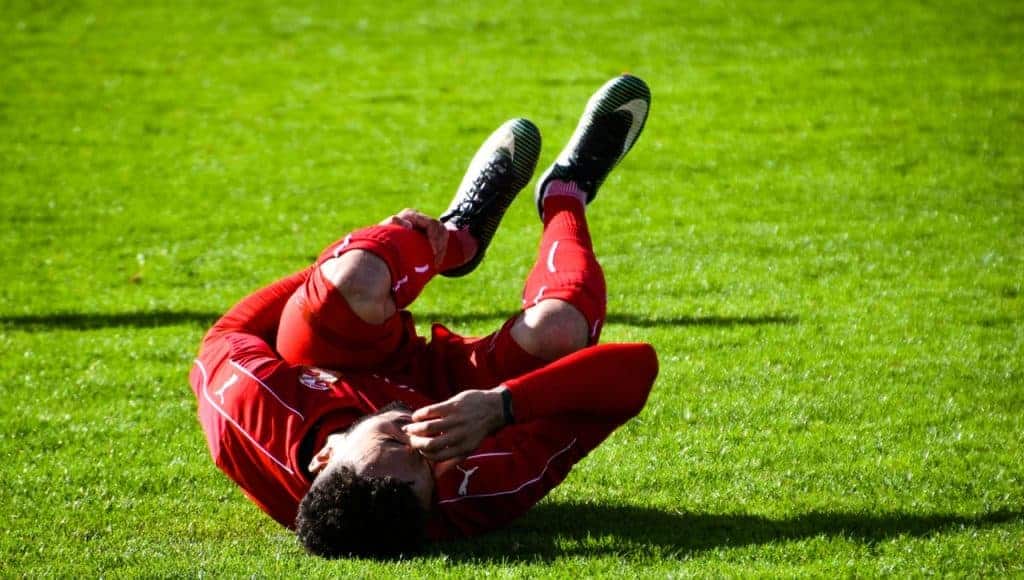
Avoiding winter sports ankle injuries
Planning ahead is a great way to prevent winter sports injuries—particularly when it comes to ankle injuries. With the right preparation and precautions you can reduce the risk of an ankle sprain or strain.
“The common preventative treatment for ankle sprains is balance exercises, but while this might go some way to help reduce ankle sprains the approach really needs to be multi-factorial,” says Dr Brenden.
“To lessen the risk of injury you need to use taping, bracing and practice strength exercises.”
But be warned, Dr Brenden explains that many healthcare professionals—including, physios, chiros, sports coaches and others—at times only suggest doing calf raises. He says, “This is fine if the sport you’re doing only requires you to move the ankle up and down, but if your sport means moving your ankles side to side (for example, skiing, netball, rugby league, football and almost all sports!) then calf raises are of no use.
“A textbook response to ankle sprains will often end patients in trouble. If your health professional is merely suggesting calf raises, it’s time to look further afield.
“More and more evidence suggests we need to look much further up the body, toward the gluteal muscles and alike.
“As such, your strength training needs to incorporate more than just your ankle and should be more sport specific.”
Dr Brenden says you need to functionally challenge the ankle in order to strengthen it appropriately and a special emphasis should be on preparation.
“Those participating in winter sports (or any sports for that matter!) can benefit from completing a tailored muscle strength-conditioning program. This is particularly the case if you’ve suffered a previous ankle sprain or are at high risk of injury.”

Points to note:
- Ankle strengthening activities should include hoping, jumping and cutting movements if that is part of your sport
- Strength exercises should include loading the muscles to be able to dynamically work as they would in your chosen sport
- Loading the muscle prepares your muscles for the activity ahead. This may include using more than just weight-bearing exercises and incorporating resistance-based training.
Additional measures to help prevent ankle sprains include:
- Warming up. Cold muscles are less flexible and more prone to injury
- Wearing footwear appropriate to your sport
- Making sure your footwear fits you properly (loose boots can cause falls, increasing risk of ankle injury)
- Taking the time to cool down. Slow stretching can reduce post-sports muscle tightness and soreness and may help reduce future risk of injury
- Knowing your limits and sticking to them
Treating your ankle sprain
The immediate treatment for an ankle sprain is the RICE approach. This incorporates: Rest, Ice, Compression and Elevation.
- REST: “if it hurts don’t do it”. Giving your ankle a period of rest after the sprain can assist with healing
- ICE: apply ice packs to the ankles, or area of discomfort
- COMPRESSION: apply bandages over the injured area. Compression socks are available from your local podiatrist’s clinic
- ELEVATION: lift the foot up above the waist or heart.
“Evidence shows that ankle sprains are unlikely to get better by themselves. Plus once you have an ankle sprain, you’re significantly more likely to have another sprain.”
“So just like the pre-sport preparation phase, it’s time to get back to strength and exercise-based rehabilitation as your next phase in rehab,” says Dr Brenden.
Related articles:
Your guide to rock-solid ankle stability
Your guide to choosing the best netball shoe
Your guide to choosing a footy boot
Think you have a heel spur, think again
A Step Ahead Foot + Ankle Care is one of Sydney’s leading foot and ankle clinics. Principal podiatrist and founder of A Step Ahead Dr Brenden Brown (AKA Dr Foot) has been taking care of people’s feet for more than 20 years.
With a background in sports medicine and having served as a former president of the Australasian Podiatry Council, Brenden is a wealth of information when it comes to foot and ankle care.

Blog, Sports Care

Your guide to choosing the right football boot
“Numerous sports people come to see me every year and apart from problems with foot or body posture, a big issue is wearing the wrong football boots for their feet,” says sports podiatrist and founder of A Step Ahead Foot + Ankle Care Dr Brenden Brown.
Common football foot injuries and how you can avoid them
Achilles tendonitis and Sever’s disease
“Most shoes are not flat, they’re higher at the heel than at the front. Yet, the majority of football boots on the market are perfectly flat.
“A combination of tight muscles (muscles that are overworking due to sport) plus wearing completely flat shoes—which is common in most footy boots but uncommon in your regular footwear—can lead to serious foot problems in adults and kids. Foot issues include pain in the arch of the foot and heel pain.”
Quick fix: To address some of the issues associated with flat shoes, most podiatrists can give you a heel raiser to pop in the back of the shoe. You can also look for a football boot with a raised heel.
Ankle strains
“Amongst other things, one of the keys to preventing ankle strains is to avoid shoes with a highly flexible shank (midsole),” says Dr Brenden.
“When selecting a football boot —or any shoe for that matter—hold the shoe with one hand on the back heel and the other hand on the toes and try to twist in opposite directions, as if you’re wringing the shoe out. If you can wring out the shoe easily (like a cloth), it’s a no, no.
“Good football boots won’t allow you to do this; they should have strength and support in the midsole section to control and stabilise your foot. This can help to protect against ankle strains.”
Shin splints
“Most football boots are designed with a flat foot bed, which can lead to many issues — one of which is shin splints. Shin splints are more common in people with flatter feet than in those with high arches and can be a result of poor choice of football boot or sudden increase in activity.”
Dr Brenden explains that the lack of cushioning puts excess pressure or force on the muscles, tendons and bone tissues surrounding the shin. This leads to inflammation and pain.
“Calf tightness is also a culprit!” he adds.
Quick fix: Stretch out those calves. Make sure to stretch both muscles. A quick internet search will throw up lots of great calf-stretching exercises.

A guide to choosing a great footy boot
“Footy boots are often designed for and around elite footballers and while a particular football boot might be fine for Beckham—it’s often not ideal for Bradley in the Under 13s!”
General Manager of product for ASICS Mark Doherty says, “In ASICS football boots we raise the heel by 10mm and that’s quite unique to ASICS; most footy boots are flatsole boots (or zero platform as we call it).
“The principle behind the 10mm heel is injury prevention; it raises the heel to take a bit of the strain of the muscles in the lower limb and hopefully it helps with some of the muscle overuse injuries that people get.”
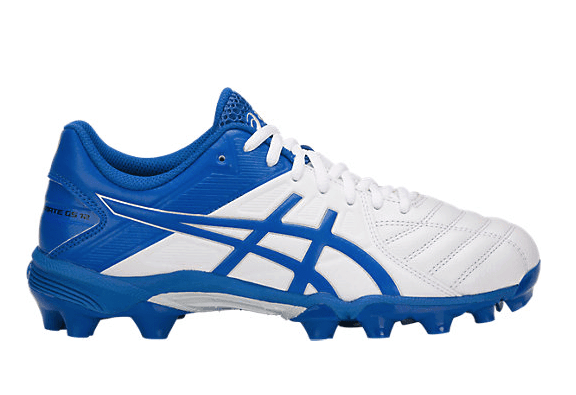
ASICS Lethal Ultimate has a full midsole—on the fore foot and the rear. It also still has the 10mm heel raise. The idea behind the Ultimate is that it offers comfort and cushioning, so on really hard Aussie ground it gives the added protection that you don’t normally get from a soccer boot.
“The midsole also allows for a wider fit,” adds Mark.
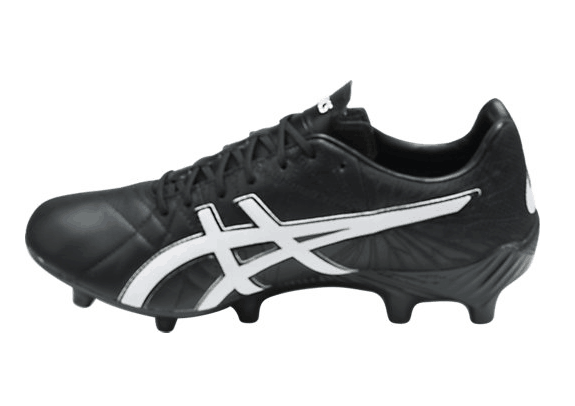
“The Lethal Tigreor is a speed shoe. They look like any other football boot (from other brands) but they’re unique in that they have a midsole in the rear of the shoe, which gives the shoe that 10mm raise.
“Our boots are also unique in that they all have a removable sockliner. You can take the sockliner out and put an orthotic in without losing that all-important depth in the heel of the shoe.”
He says price will play a factor in determining the quality of the shoe. Shoes can vary from 100% synthetic upper to part synthetic, part leather through to full kangaroo leather (as is the case with ASICS Testimonial).
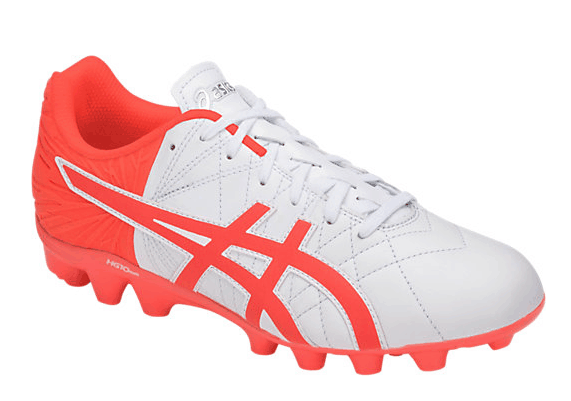
“The Tigreor Junior has a kangaroo toe box, which is unique and feels really good. Kangaroo is only 0.8 mm thick, whereas most synthetic or calf leather is 1.3mm thick. The thinner the material the better, as you get a greater feel of the ball. Kangaroo is thin but also very tough, making it ideal for football boots,” says Mark.
Key factors to consider when selecting a footy boot
- It needs a firm heel counter
- You shouldn’t be able to wring or twist the shoe
- A shoe shouldn’t bend in the middle
- It should be highly flexible in the toe area
- Most people will also benefit from having a slight heel raise
Other articles you might like:
Your guide to rock-solid ankle stability
10 things you should know about heel pain
Think you have a heel spur? Think again
A Step Ahead Foot + Ankle Care is one of Sydney’s leading foot and ankle clinics. Principal podiatrist and founder of A Step Ahead Dr Brenden Brown (AKA Dr Foot) has been taking care of people’s feet for more than 20 years.
With a background in sports medicine and having served as a former president of the Australasian Podiatry Council, Brenden is a wealth of information when it comes to foot and ankle care.

Blog, Heel Pain

Think you have a heel spur? Think again
There’s a myriad mystery and misinformation about heel spurs. Just the thought alone of having a hard protruding growth on the bottom of the heel is more than a little alarming — but really, it needn’t be.
What is a heel spur?
“A heel spur is a small bony growth at the underside of the heel bone. People call it a spur or a calcification. We might also call it an exostosis (a benign outgrowth of cartilaginous tissue),” explains sports podiatrist and founder of A Step Ahead Foot + Ankle Care Dr Brenden Brown.
“Heel spurs are incredibly common. I see it in about 40-50% of the x-rays I perform. “However, the vast majority of people with heel spurs experience NO PAIN whatsoever.
“In all of the time I have been a podiatrist (which is 20 plus years) I have seen two symptomatic heel spurs. I’ve seen lots of heel spurs but only two that have ever presented with associated pain.
“So if we talk about the signs of symptoms of heel spurs there aren’t really any apart from having a large bony or hard nodule on the underside of the heel pad that doesn’t feel the same as the other foot and cannot be depressed (pushed or squashed).
“99% of people who come to me saying they have pain from a heel spur do not have pain as a result of a spur.
“A heel spur won’t bother you unless it’s prominent beneath your foot and the orientation of the spur is angled more towards the ground; this could cause some pain and discomfort. However, I’ve read about these types of spurs but I’ve never even seen one. Not in 20 years of practicing.”
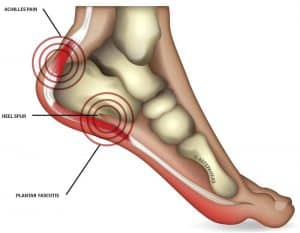
5 heel spur facts
- Your pain is most likely not caused by a heel spur
The vast array of people with heel spurs have NEVER HAD A DAY OF PAIN in their life
- Heel spur pain doesn’t come and go like a yo-yo
In those very rare cases where people do have a heel spur that’s causing them pain—the pain doesn’t come and go.
“If you have a friend who tells you they had a heel spur and the pain went away you have to ask yourself ‘where did that pain go?’ The pain of a heel spur isn’t like the cast of Neighbours – it doesn’t travel from Melbourne to Queensland to get a job and never return!”
- Silica won’t cure a heel spur
“People have told me they took silica and it miraculously dissolves their spur. I have to ask these patients ‘how on earth did the silica dissolve your bony spur but manage to leave the rest of the foot in tact. How did it not also dissolve the frontal lobe of your skull?”
- No operation needed
Even if you do have a heel spur, which most of the time is an incidental finding on an x-ray, you don’t need an operation to remove it.
- Cortisone won’t help your heel pain
For most people cortisone is useless in treating heel pain. In fact, studies have shown that after three months 56% of people who were having cortisone injections for their heel pain had zero reduction in pain.
If it’s not a heel spur — what is causing my pain?
Heel pain can be caused by a variety of other reasons including: plantar fasciitis, plantar fasciosis, abductor hallucis strain or tibialis posterior tendinosis.
If you are suffering from heel pain, be sure to visit your local podiatrist but don’t be fooled into automatically thinking that it’s a heel spur—it’s highly likely that it’s not!
Related articles:
10 things you should know about heel pain
A Step Ahead Foot + Ankle Care is one of Sydney’s leading foot and ankle clinics. Principal podiatrist and founder of A Step Ahead Dr Brenden Brown (AKA Dr Foot) has been taking care of people’s feet for more than 20 years.
With a background in sports medicine and having served as a former president of the Australasian Podiatry Council, Brenden is a wealth of information when it comes to foot and ankle care.
Got a question? Check out our Instagram profile #AskDrFoot
Or, tune into our Facebook page for regular live videos and updates on the latest foot and ankle advice from the experts.
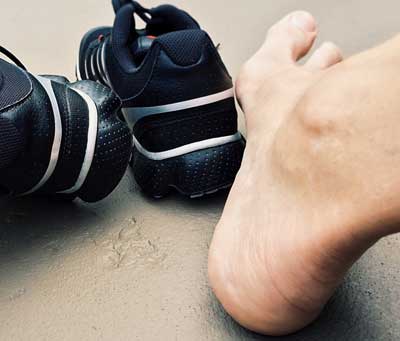
Blog, Heel Pain
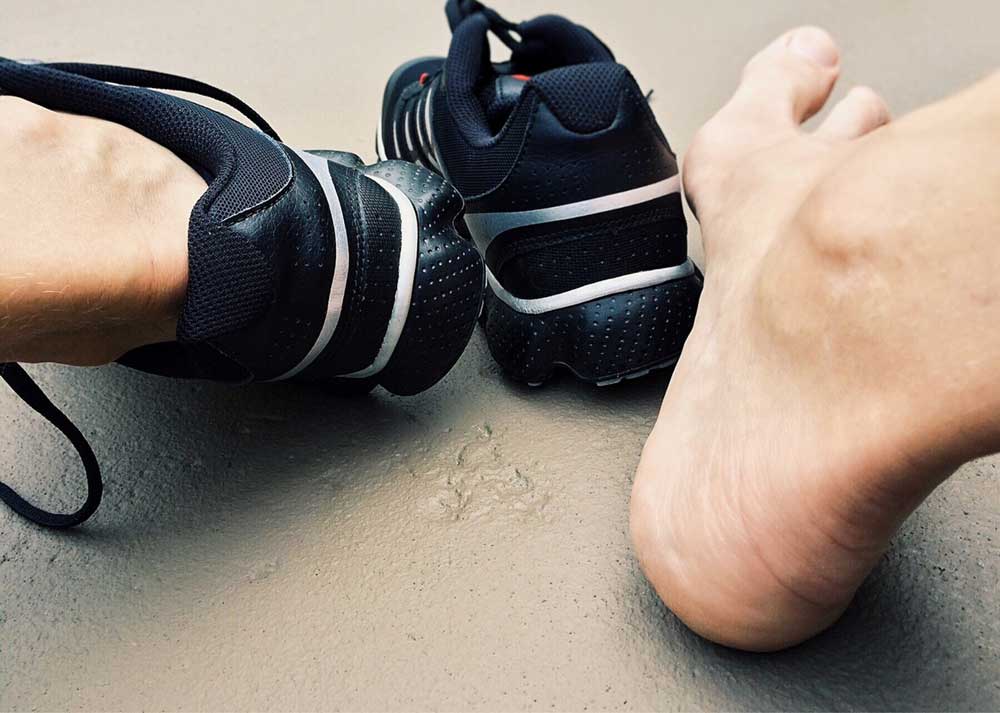
10 things you should know about heel pain
Heel pain is common but that doesn’t make it any less painful or less frustrating to live with. While the causes of heel pain can vary, the most popular culprit is a condition called plantar fasciitis (also referred to as heel pain and runner’s heel).
There are many cases of misunderstood heel pain—either because a proper diagnosis hasn’t been sought or the incorrect information has been given out. With a myriad of myths circulating about heel pain, it’s essential to get the right advice.
10 things you should know about heel pain
Bruising isn’t always the cause
“Heel pain is commonly linked to a bruised heel; but in fact an over-stretching of the fibrous tissue in the foot causes plantar fasciitis. It can also be incorrectly diagnosed as heel spurs or achilles tendonitis,” says podiatrist and founder of A Step Ahead Foot + Ankle Care Dr Brenden Brown.
Rest is not the best treatment
Rather than seeking professional help, many people suffering from heel pain will ignore their condition—hoping rest and time will cure it. If left untreated plantar fasciitis can last years.
Ignoring heel pain can lead to other health concerns
Untreated plantar fasciitis can further aggravate the foot, resulting in increased swelling. It can also lead to other medical problems affecting the hips, back and knees.

Barefoot is not best
Going barefoot might seem like the natural thing to do but walking around without shoes puts additional strain on the plantar fascia—particularly first thing in the morning, when the muscles and tissues are tight.
Cushioning offers comfort but not a cure
People commonly opt for a foam or silicone heel cushioning as a treatment for heel pain. Yes, this might provide some temporary comfort, but it won’t cure the condition.
Not all orthotics are equal
Hard, rigid orthotics are not only uncomfortable, they will do nothing for your foot pain. They might actually cause you more pain. Soft pliable orthotics are designed to support the foot while allowing the natural movement. However, orthotics alone won’t heel your feet pain. Talk to one of our podiatrist about the best orthotics and the different therapies that can help rehabilitate damaged tissue.
Fancy footwear isn’t always the answer
Thongs, trendy trainers or even fancy footwear with special arches won’t cure heel pain. Yet choice of shoe is important. A shoe that has a firm shell and a small amount of structured cushioning works best. The shoe should NEVER bend in the middle. Before heading out to pick up a new pair of shoes, chat to one of our podiatrists to get the right advice—as well as a detailed solution that includes other treatment options.
Injections aren’t the only option
Cortisone injections can be painful and evidence suggests they don’t work. In fact, one study showed that 3 months after having a cortisone injection more than 55% of people had the same pain. Another study revealed that injections of saline and cortisone both gave exactly the same result!
Heel pain can be prevented
Prevention is always the best cure and there are a number of ways to help ward off heel pain including:
- Maintaining a healthy weight
- Stretching before exercising and wearing appropriate footwear with supportive heels and shock-absorbent soles
- Avoiding wearing ill-fitting and second-hand shoes
- Avoiding going barefoot
Plantar fasciitis can be cured
The first step towards treatment should be a proper diagnosis from a podiatrist. The best approach to heel pain should be a multi-pronged plan that might include orthotics, professional advice and therapy, such as shockwave treatment.
To find out more about plantar fasciitis visit: heelpaindoctor.com.au or to obtain a diagnosis contact A Step Ahead Foot + Ankle Care today.
A Step Ahead Foot + Ankle Care is one of Sydney’s leading foot and ankle clinics. Principal podiatrist and founder of A Step Ahead Dr Brenden Brown (AKA Dr Foot) has been taking care of people’s feet for more than 20 years. With a background in sports medicine and having served as a former president of the Australasian Podiatry Council, Brenden is a wealth of information when it comes to foot and ankle care.
You might also be interested in our Facebook live sessions:
5 Myths about heel pain
6 reasons your heel pain is NOT getting better
Strength exercises to beat and prevent heel pain
Or head over to Coach Nine to hear what else Dr Brenden has to say about heel pain.




















 Dr Brenden’s White paper report on the “6 Reasons You Won’t Beat Heal Pain” outlines what’s stopping you from beating this and tips on how to stop it in its tracks!
Dr Brenden’s White paper report on the “6 Reasons You Won’t Beat Heal Pain” outlines what’s stopping you from beating this and tips on how to stop it in its tracks!